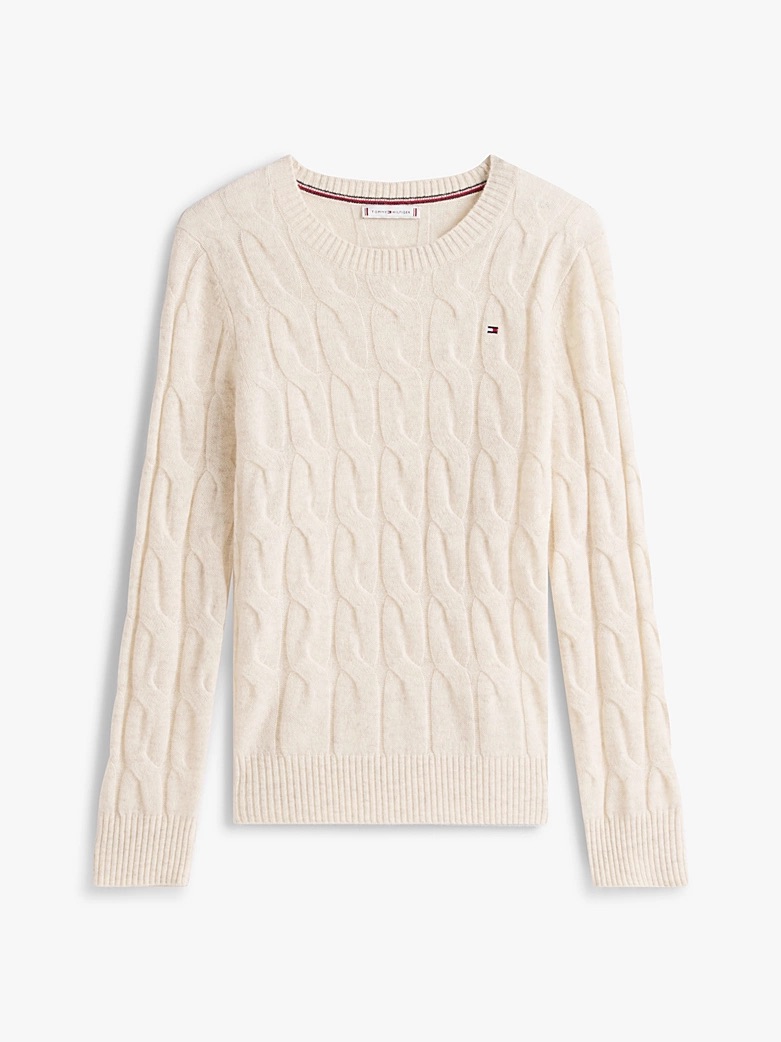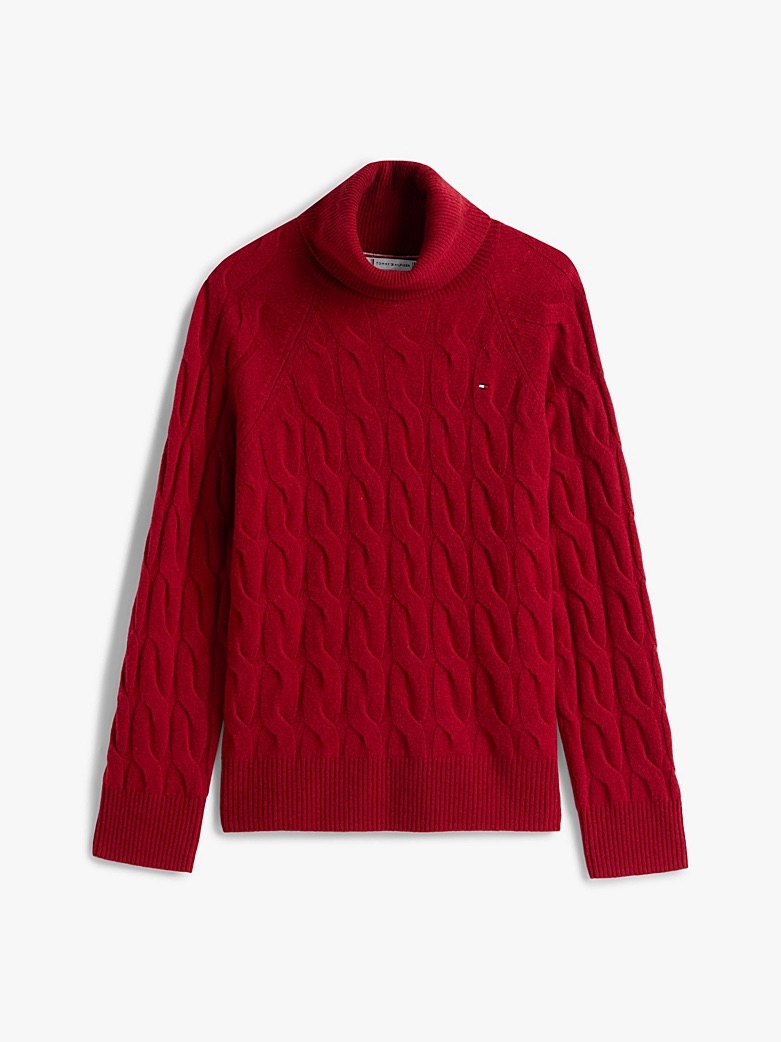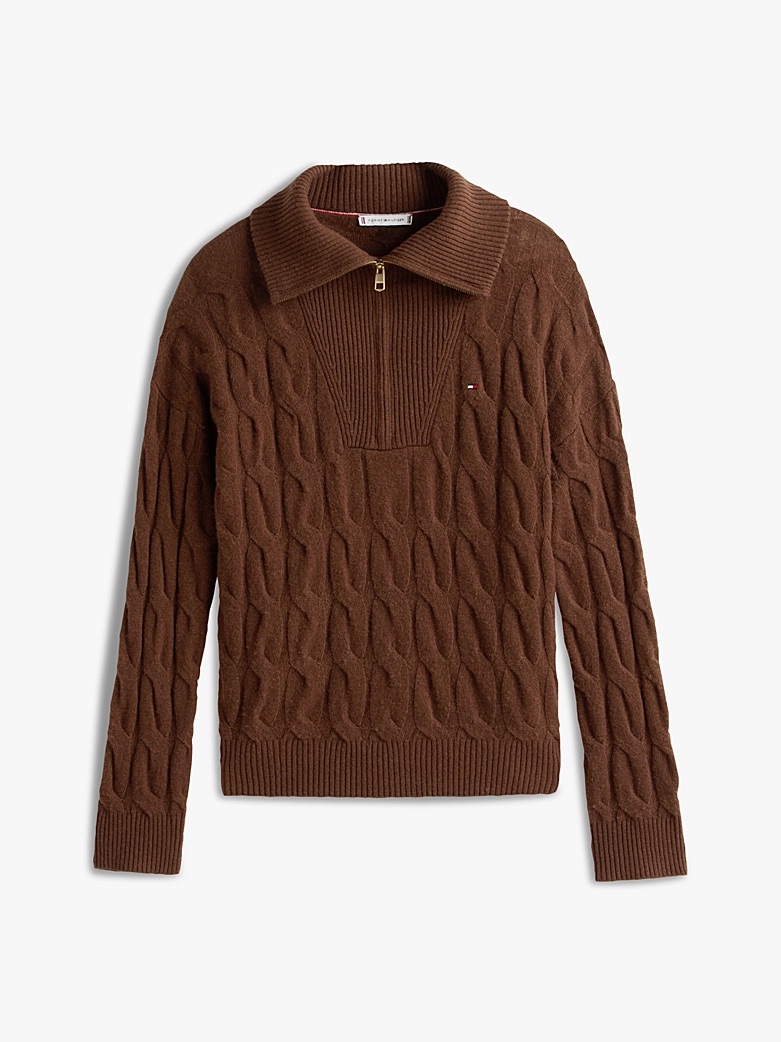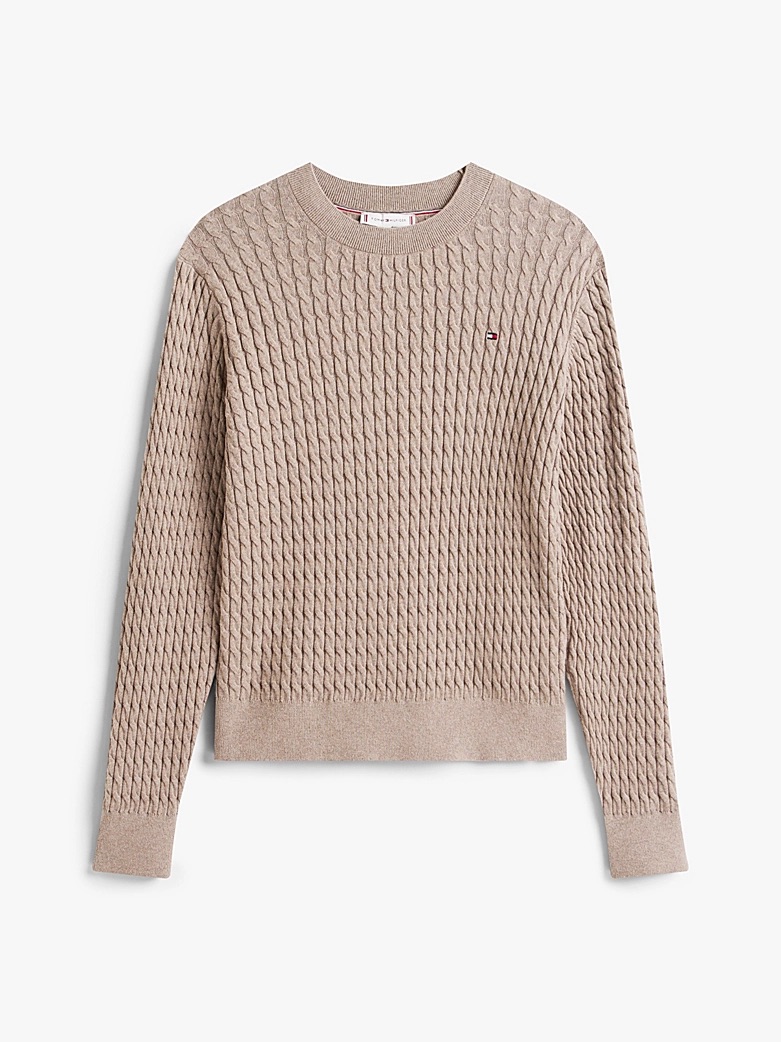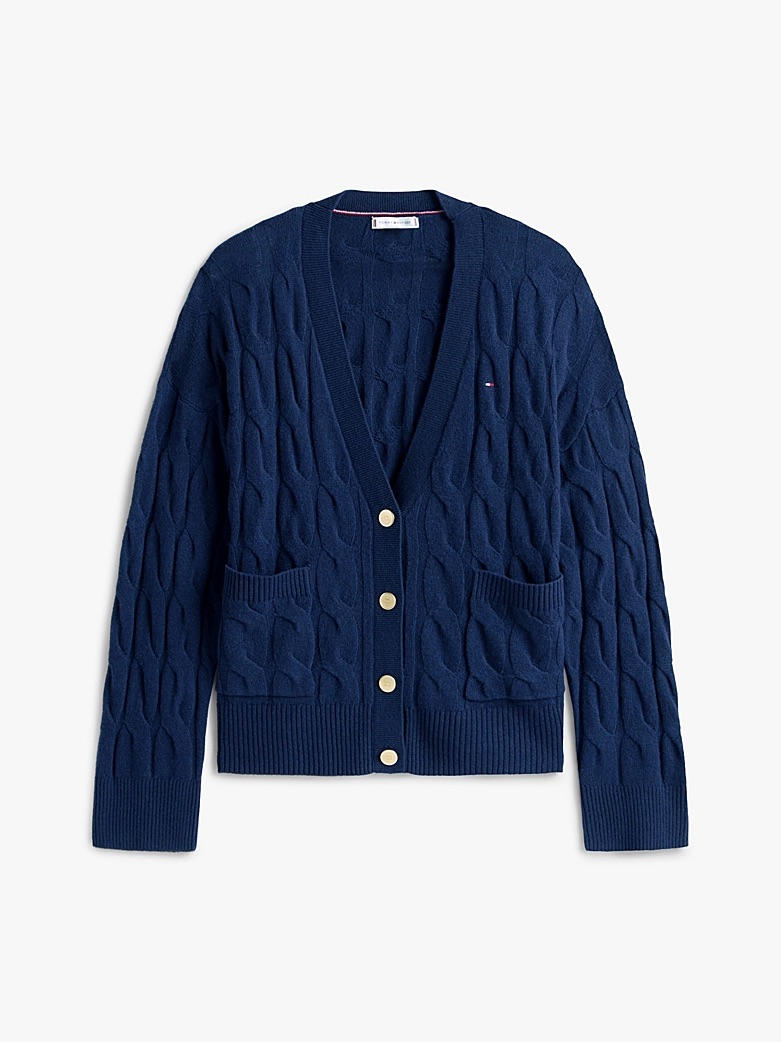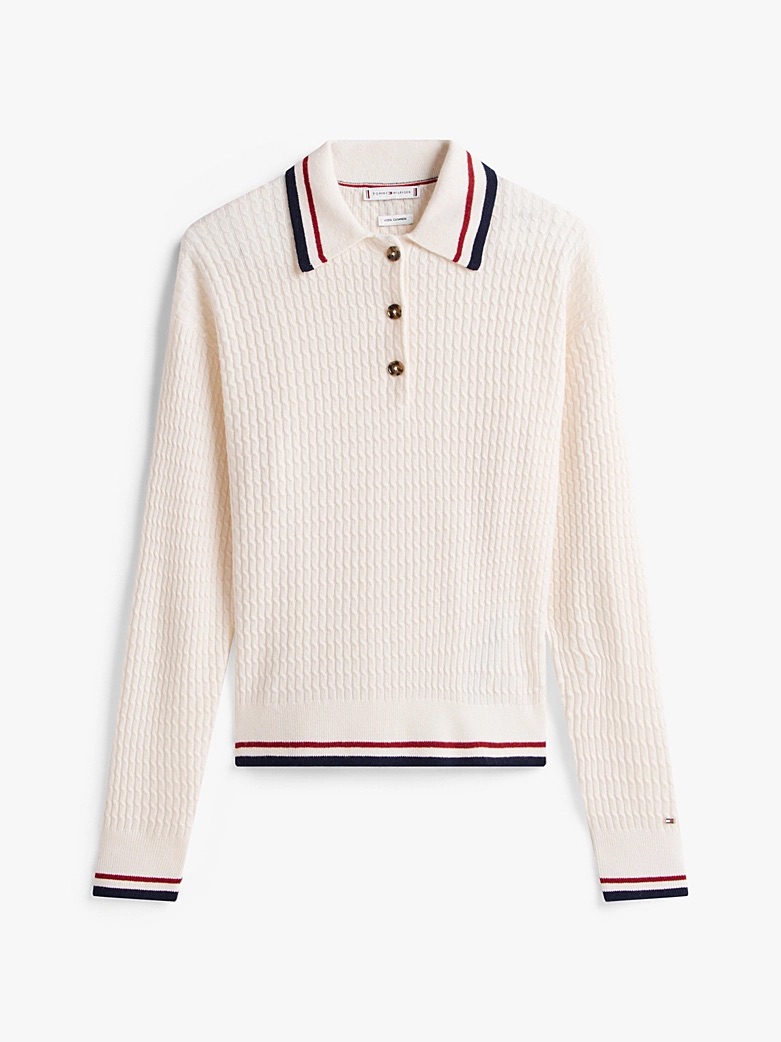Sponsor Content Created With Tommy Hilfiger
Icons Only: The Story Behind Tommy Hilfiger's Most Enduring Knit
From East Coast campuses to modern runways, the cable knit remains a defining thread in Tommy Hilfiger's timeless preppy aesthetic. Discover it here.
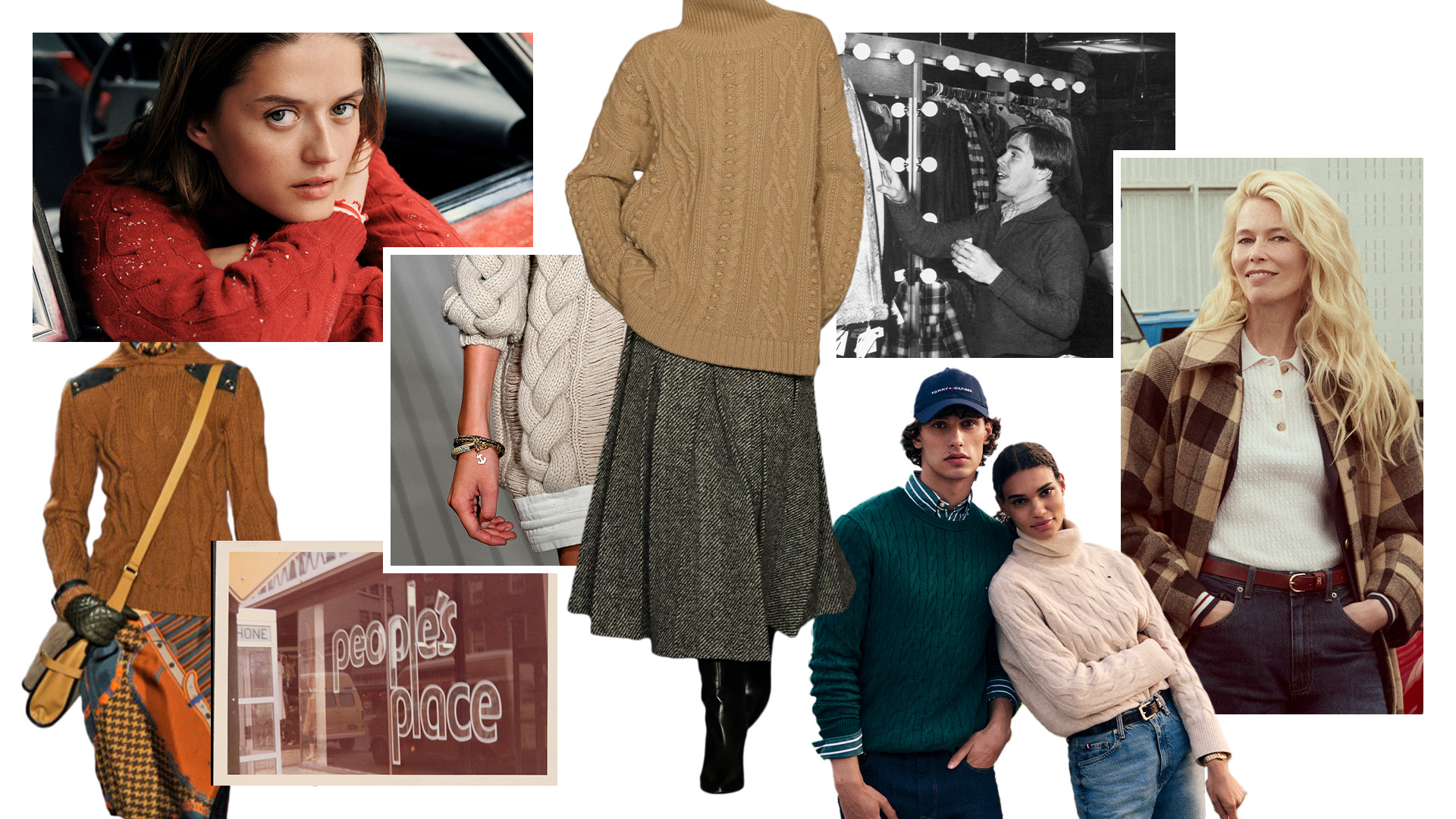
Few brands have managed to define American style quite like Tommy Hilfiger. Since launching his eponymous label in 1985, Hilfiger has built a world rooted in optimism, accessibility and a distinctly preppy sensibility. His designs have long drawn from the spirit of collegiate life and athletic tradition, reframing them through a lens of inclusivity and ease. From his earliest campaigns to his global runway shows, that unmistakable sense of classic cool has remained constant—and no piece encapsulates it more perfectly than the cable-knit jumper.
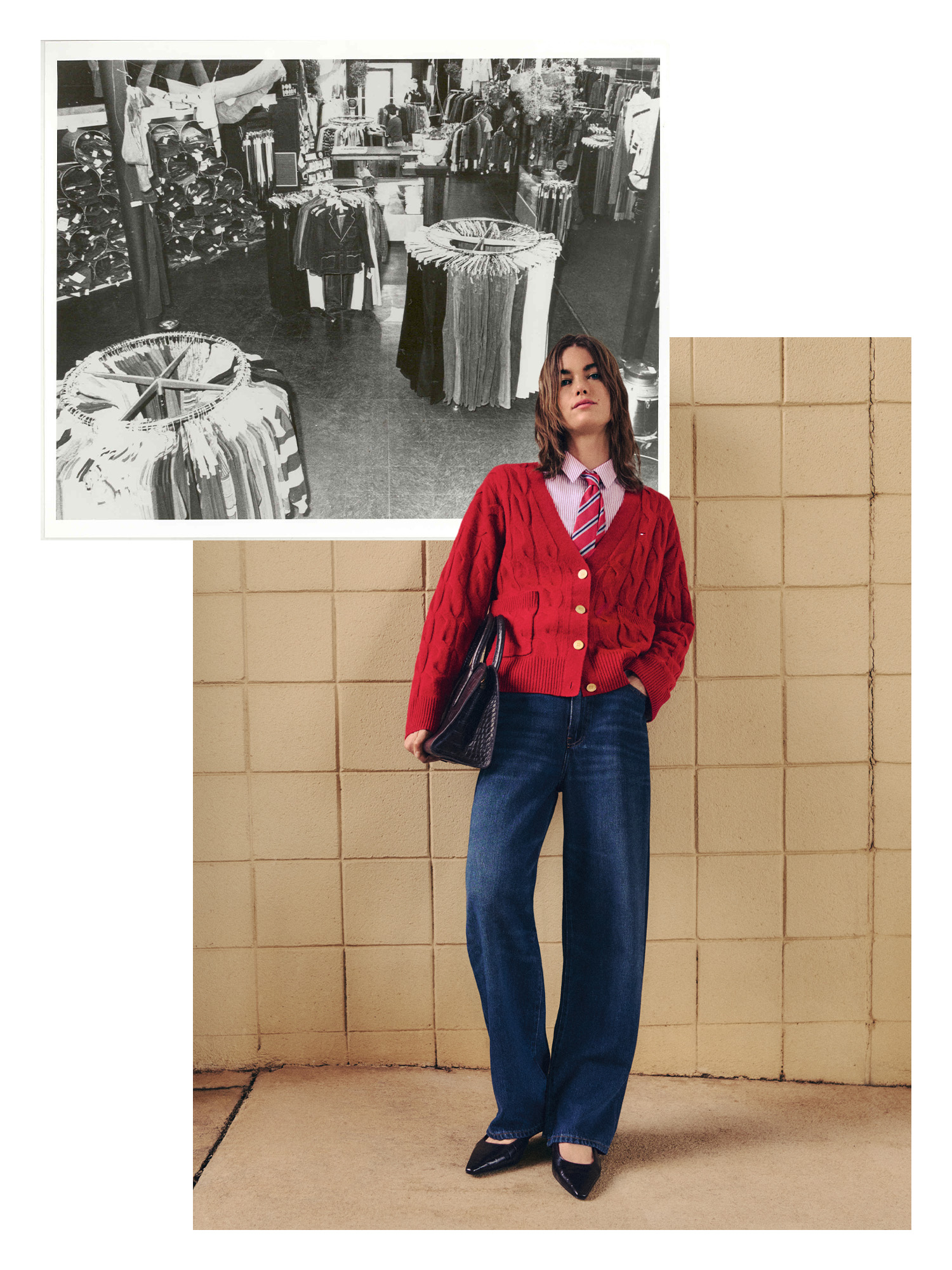
At first glance, it's a simple wardrobe staple: textured, neutral, reliable. But within the Tommy Hilfiger world, it represents something far richer; it's a symbol of American heritage, reinterpreted for each generation. The cable knit has transcended its original sporting roots to become a cornerstone of the brand's DNA, connecting decades of design, culture and identity.
The Beginning: From People's Place to Pure Prep
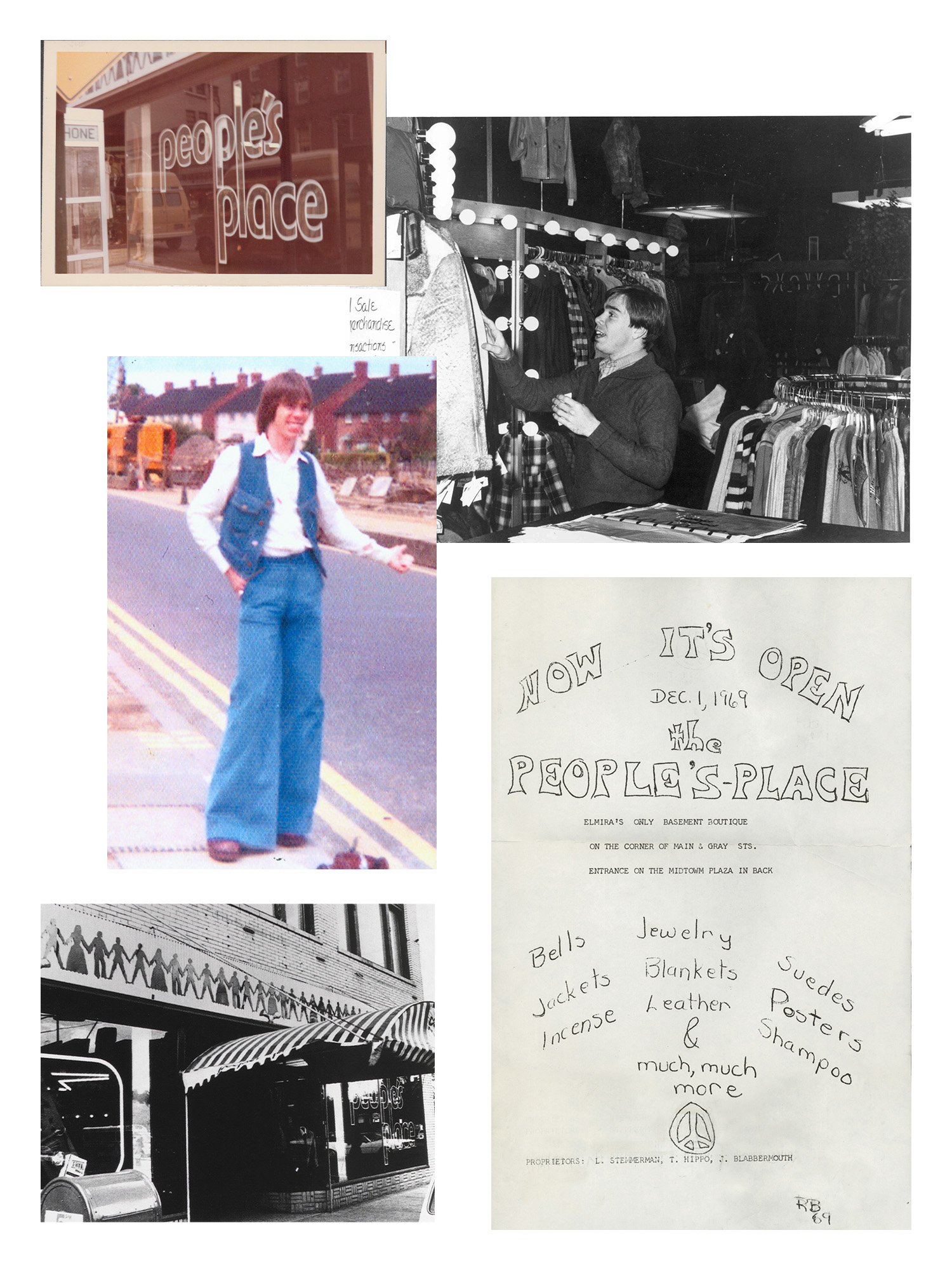
To understand the significance of the cable knit, it's worth returning to where Tommy Hilfiger's story began, a small shop in Elmira, New York, called People's Place. Opened in 1969, the store quickly became a hub for local youth, a place where music, style and community intertwined. Hilfiger curated denim, army surplus and rock-inspired pieces that reflected the countercultural spirit of the time. But beyond clothes, People's Place represented something more profound: it was about belonging.
This ethos—fashion that felt personal, accessible and democratic—became the foundation of everything Hilfiger would later build. When he launched his namesake brand in the mid-1980s, he infused that same inclusive energy into the traditional codes of East Coast prep. The result wasn't stiff or exclusive; it was familiar and aspirational in equal measure.
The Cable Knit: A Tommy Signature From the Start
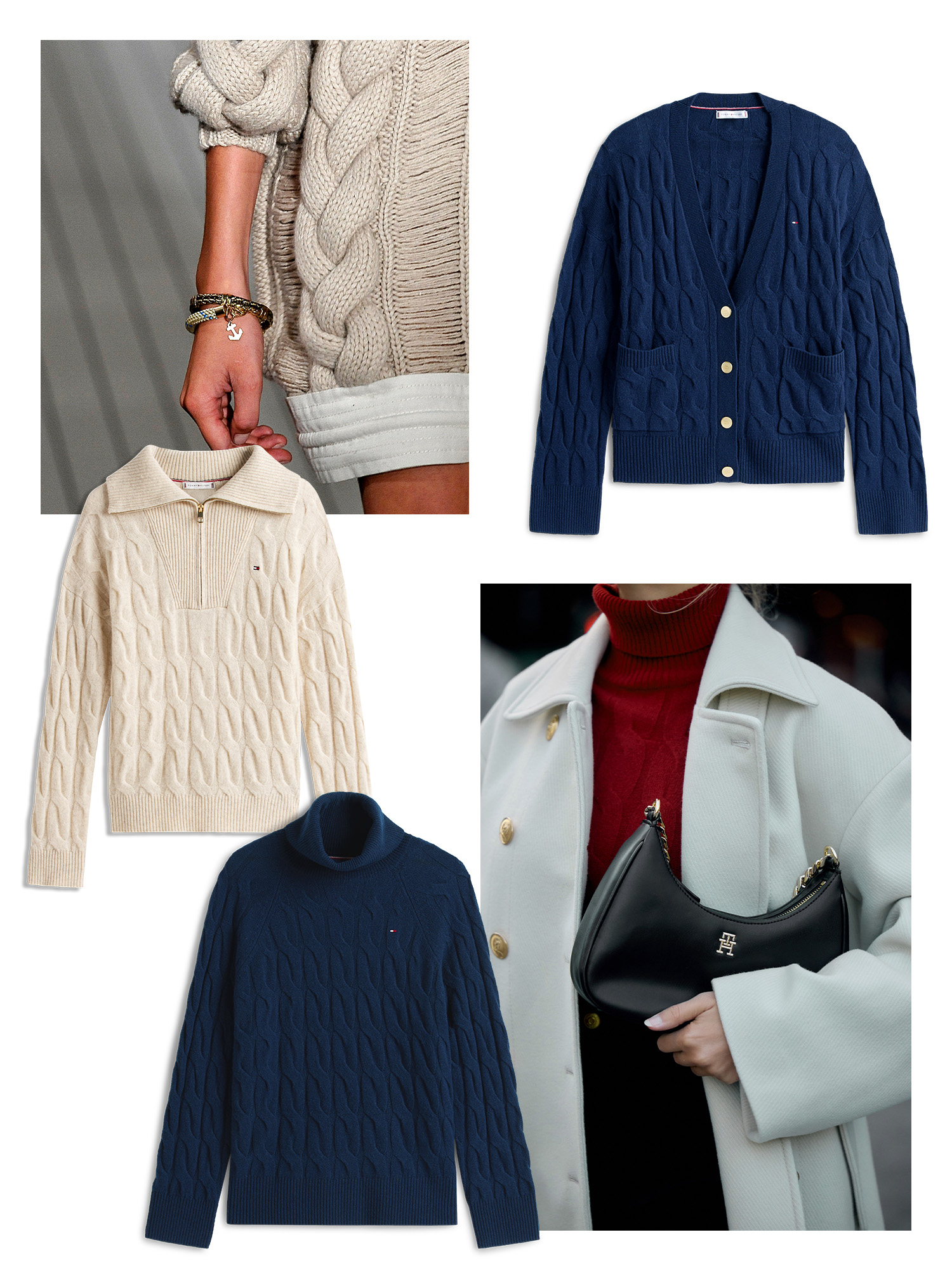
By the late 1980s, the Tommy Hilfiger look had crystallised: Oxford shirts, chinos, varsity stripes and, of course, the cable-knit jumper. It appeared early in the brand's visual storytelling—the 1988 brand pamphlet showed a model with a navy cable knit casually draped across her shoulders, embodying the relaxed confidence that would come to define Hilfiger’s universe.
The cable knit wasn’t new to fashion—its roots trace back to the Aran Isles of Ireland and the Ivy League wardrobes of mid-century America—but Hilfiger reimagined it for the lifestyle he wanted to portray: smart but unfussy, nostalgic yet modern. It quickly became a quiet favourite among style insiders of the era, spotted on musicians, actors and models who gravitated towards its easy luxury and subtle Americana charm. It was the jumper that worked on-and off-duty, bridging fashion and everyday life long before "off-duty style" was a buzzword.
In the 1991 buyer's guide, two standout cable knits from the Vintage Vermont delivery were spotlighted. These designs incorporated intricate Fair Isle and foulard patterns in a nod to craftsmanship and the idea that prep could evolve beyond its country-club origins. By Holiday 1992, the brand expanded on this with cable knits inspired by both Scandinavian winters and Americana warmth, merging global influences with its East Coast heart. They were the kind of jumpers you could imagine being passed down—built to last, but ever relevant.
Sport and Study: The Athletic and Collegiate Roots
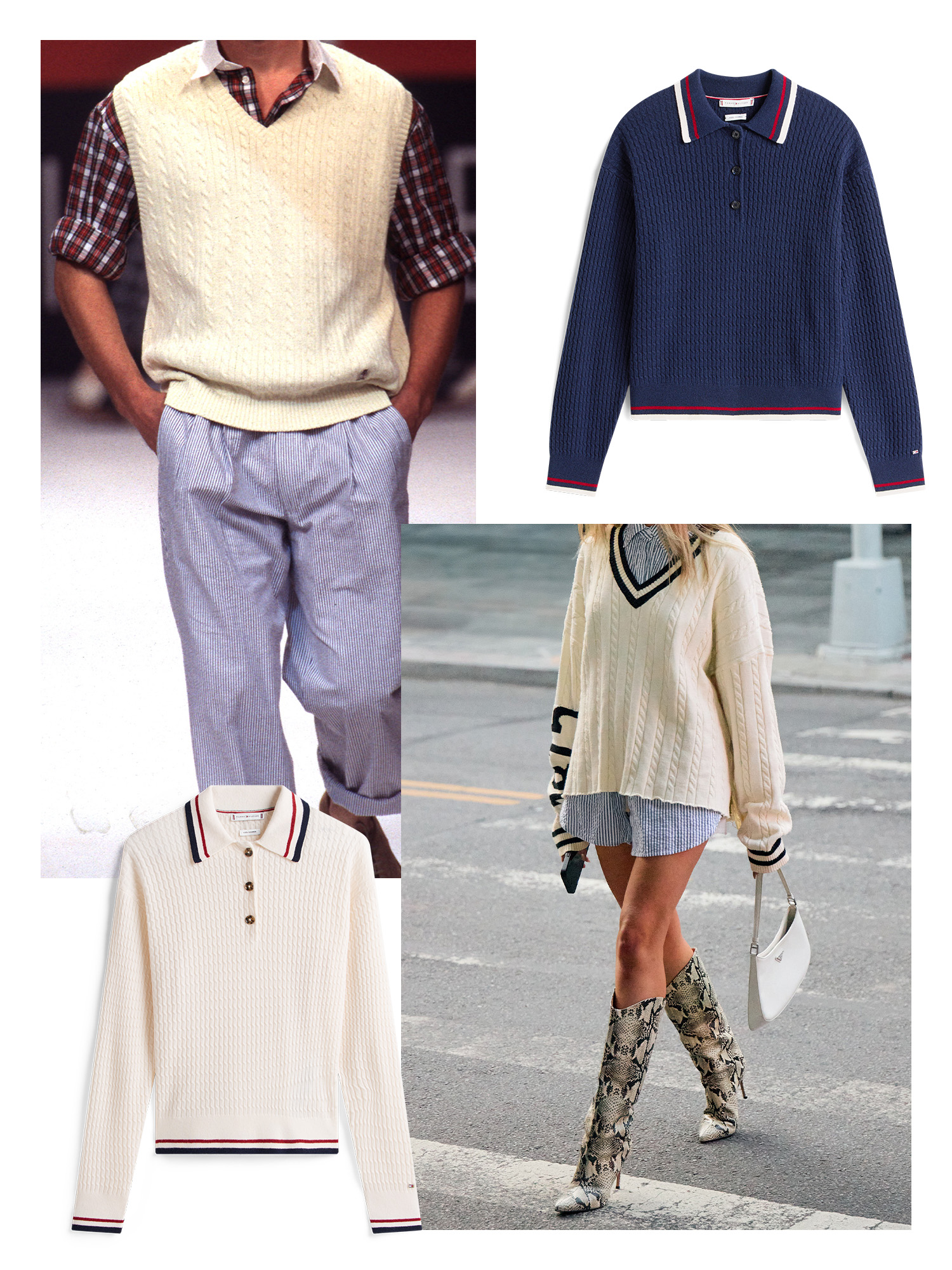
Throughout the 1990s, Tommy Hilfiger's take on prep was never simply about tradition, but about energy. The brand's cable knits borrowed cues from athletic heritage, particularly the cricket sweater, with its distinctive V-neck, ribbed trims and often contrast-coloured stripes. The look embodied a particular kind of American confidence: the collegiate athlete who could just as easily step off the court and into a café.
This sporty interpretation became an anchor in Hilfiger's world. The early-'90s campaigns and catalogues often showed cable knits layered over shirts and paired with denim or pleated trousers, striking the ideal midpoint between relaxed and refined. The jumper's athletic origins made it inherently versatile—it worked across gender, occasion and season—and that universality cemented it as a Tommy icon. In many ways, the cable knit became the visual shorthand for the brand's broader philosophy: casual pieces elevated through attention to detail and a hint of playfulness.
The Campaigns: A Visual Timeline of an Icon
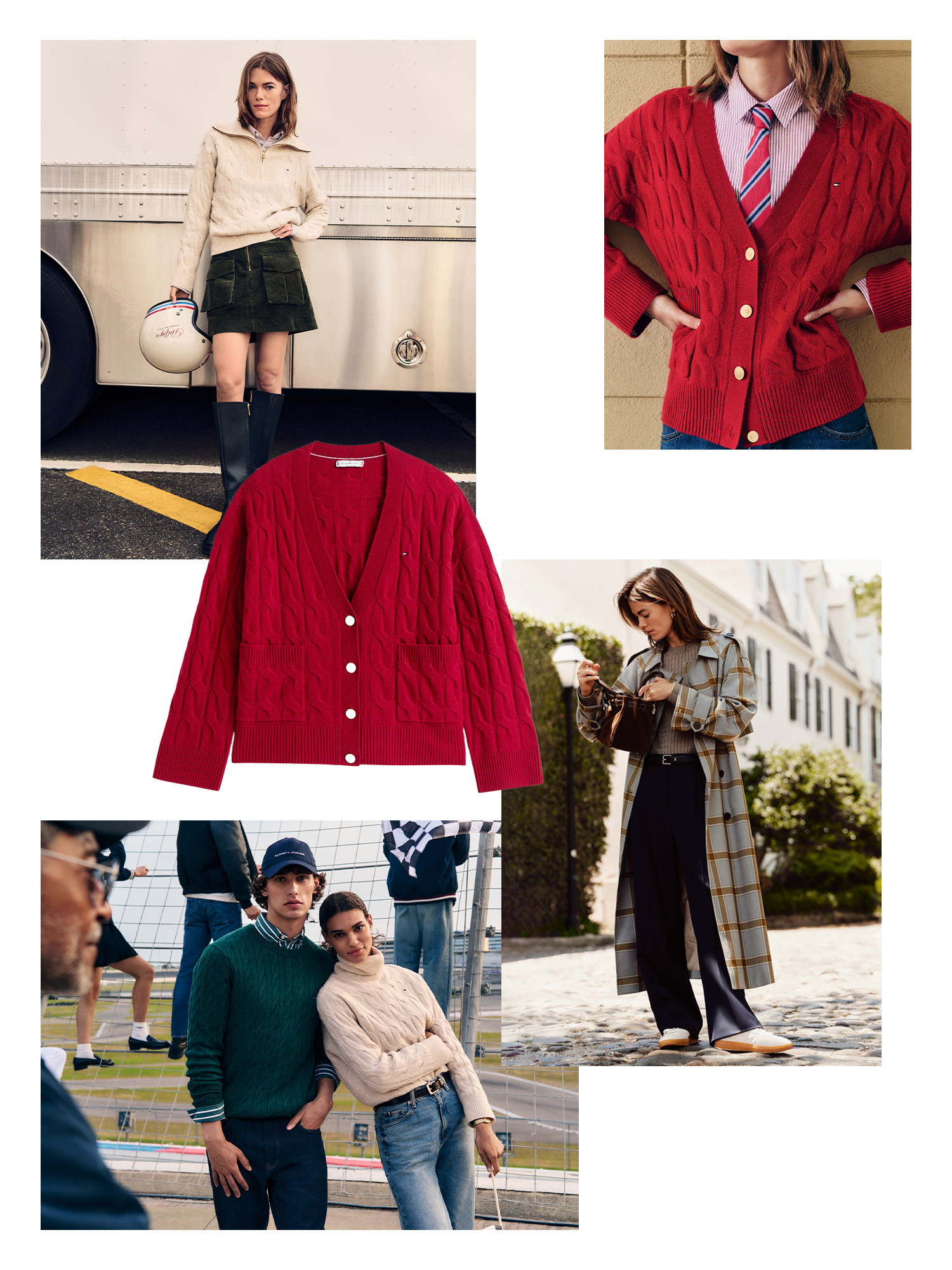
Hilfiger's campaigns have always gone beyond product to build worlds. The cable knit, in turn, has quietly starred in many of those worlds, from windswept coastal shoots in the early 1990s to the more narrative-driven imagery of later decades. In the early campaigns, the cable knit symbolised an aspirational form of leisure, captured on docksides, lawns and ivy-clad campuses. It represented a kind of preppy idealism, but one softened by youth and inclusivity. The jumpers were often styled unisex, layered or slung over shoulders, reinforcing that sense of effortlessness that defined Hilfiger's approach.
Fast forward to 2008, and the brand was entering a new era of reinvention. The imagery became sharper and more global, but still anchored in the familiar aesthetic codes. Then came Meet the Hilfigers in 2010, one of the brand's most celebrated campaigns. Set around an imagined all-American family, it played with humour, personality and nostalgia. Amongst the colourful blazers and heritage coats, the cable knit was a subtle constant, worn by multiple "family members" and reasserting its role as a unifying piece in the brand's visual identity.
In Autumn 2024, the campaign brought the cable knit firmly back into focus, capturing it through a contemporary lens. The imagery leaned into warmth and connection, reflecting a renewed appreciation for comfort and quality. Styled with pleated trousers, layered under blazers and mixed with denim, the piece felt as relevant to modern street style as it did to its Ivy League roots.
On the Runway: Reimagining a Classic
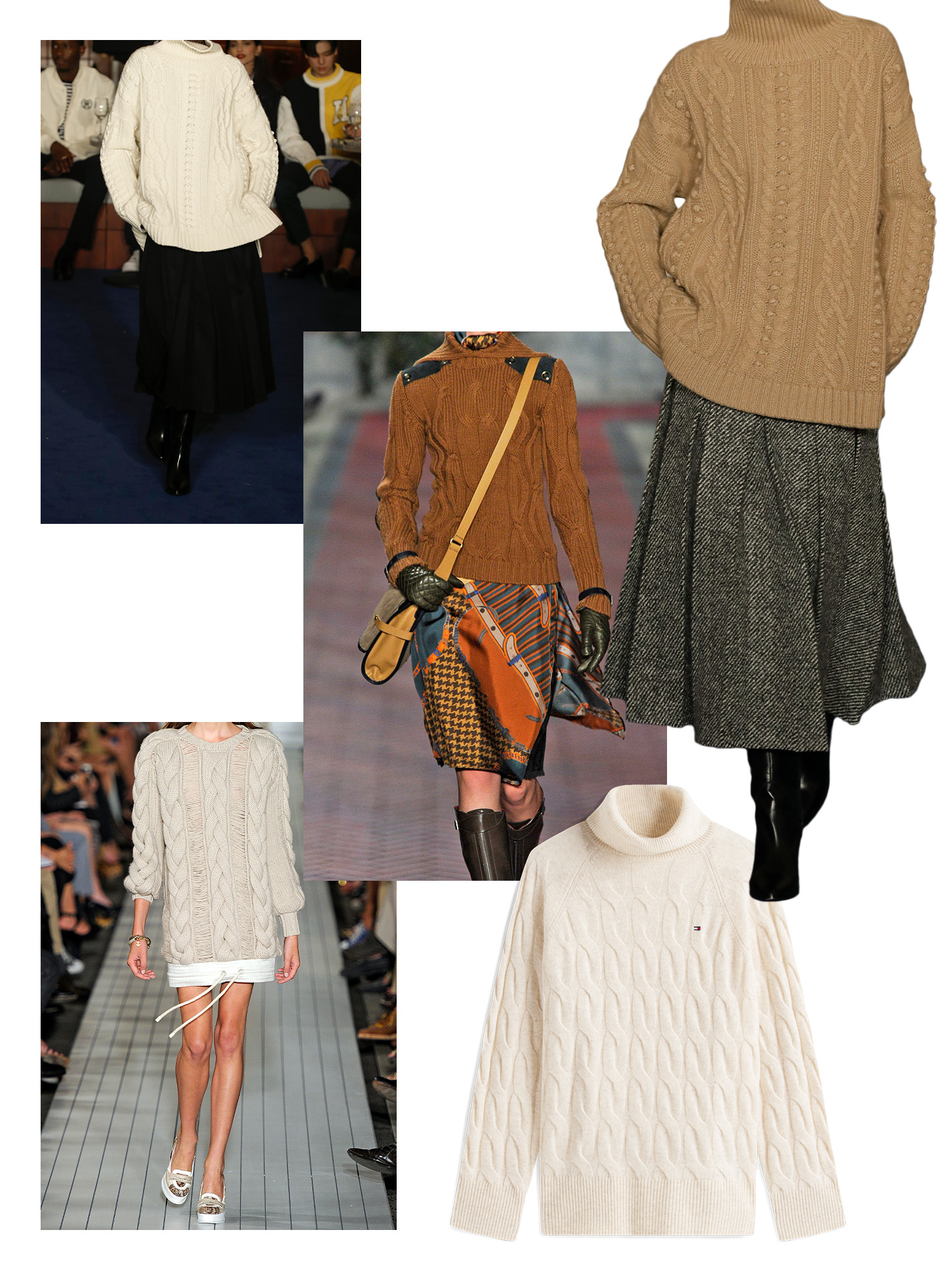
Tommy Hilfiger's runways have long been a space where heritage meets theatre. Each show tells a story—and the cable knit has been a recurring motif throughout. In the autumn/winter 2012 collection, Hilfiger took the familiar texture and transformed it into a photorealistic silk print, creating the illusion of the cable-knit pattern on tailored pieces. It was a witty, modern interpretation that showcased the brand's knack for balancing craftspersonship with innovation. One standout look—a mustard cable knit paired with a saddle-print skirt, riding boots and an equestrian helmet—captured the spirit of the collection perfectly, nodding to heritage sport while reaffirming Hilfiger's playful take on tradition.
A season later, in spring/summer 2013, the cable knit appeared again, this time exaggerated into chunky, rope-like forms, referencing nautical knots and maritime life. These larger-than-life textures turned the humble jumper into a sculptural statement, reminding audiences that the brand's preppy DNA could evolve without losing its roots. More recent collections—particularly autumn/winter 2024—have revisited the cable knit with fresh eyes. One of the most memorable runway moments saw an oversized turtleneck version styled with a pleated skirt and patent boots, a look that perfectly balanced proportion and polish. The styling was sleeker, the colours more understated, but the essence was unchanged: an emblem of comfort, tradition and everyday elegance. Each time it reappears, the knit tells a slightly different story, reflecting how Hilfiger continues to reinterpret his own icons for a new audience.
Cable Knits Today: A Modern Classic

Fast forward to today, and the cable knit remains one of the most recognisable pieces in the Tommy Hilfiger wardrobe. As part of the brand's latest Holiday collection, it's positioned not just as a seasonal essential, but as a link between past and present. The festive collection reimagines traditional dressing with Hilfiger's signature touch—think navy knits trimmed with subtle collegiate details, rich cream jumpers paired with tailored separates and oversized silhouettes that capture a more modern ease. This season, cable knits are styled in new, directional ways: worn as dresses layered under long coats, cinched with belts for shape, or paired with gloves and wrist warmers for an elevated, winter-ready look. The result feels contemporary without losing its heritage—proof that the piece's quiet versatility keeps it relevant across generations.
It's classic prep, but with an updated sensibility that feels right at home in 2025’s fashion landscape. Beyond its design, the cable knit represents continuity. In a world of fleeting trends, it's the piece that remains. Whether layered over a shirt in late spring or worn on its own as a statement knit, it embodies the understated confidence that Hilfiger built his empire on.
From a small-town shop to the runways of New York, Milan and beyond, Tommy Hilfiger's journey has always been defined by a deep respect for tradition and a refusal to let it stand still. The cable-knit jumper sits at the heart of that story. It has evolved with the times, mirrored the brand's growth and adapted to new contexts without ever losing its sense of authenticity. More than just a sweater, it's a through-line in the brand's legacy: a symbol of skill, optimism and timeless American style. Decade after decade, it proves that true icons aren't created for a season—they're woven into fashion's history itself.
Shop Cable Knits:
Humaa is the Junior Branded Content Editor at Who What Wear UK, specialising in trend-led beauty and fashion content. Previously an editor at Who What Wear US and British Vogue, she brings years of product-testing expertise. Off duty, she's working through her endless Kindle TBR.
